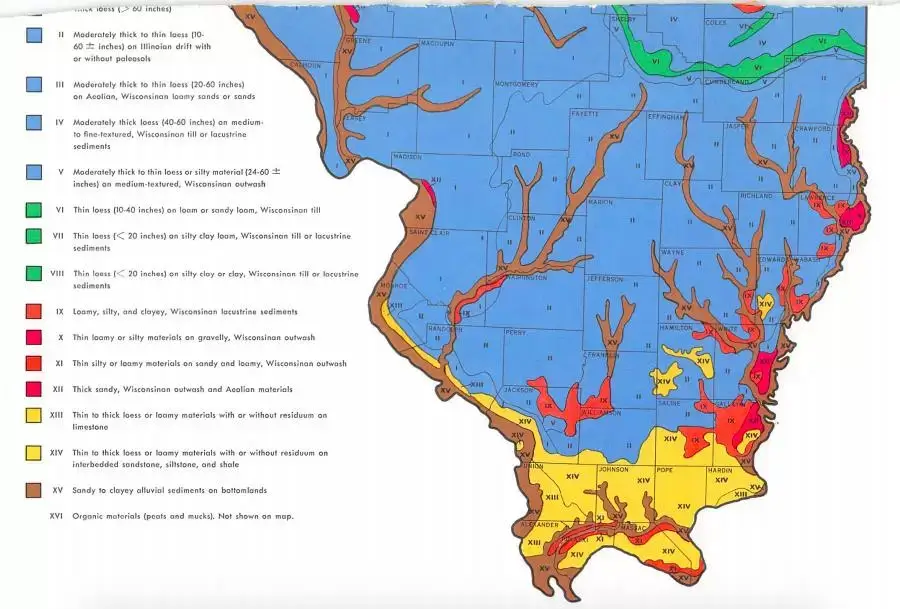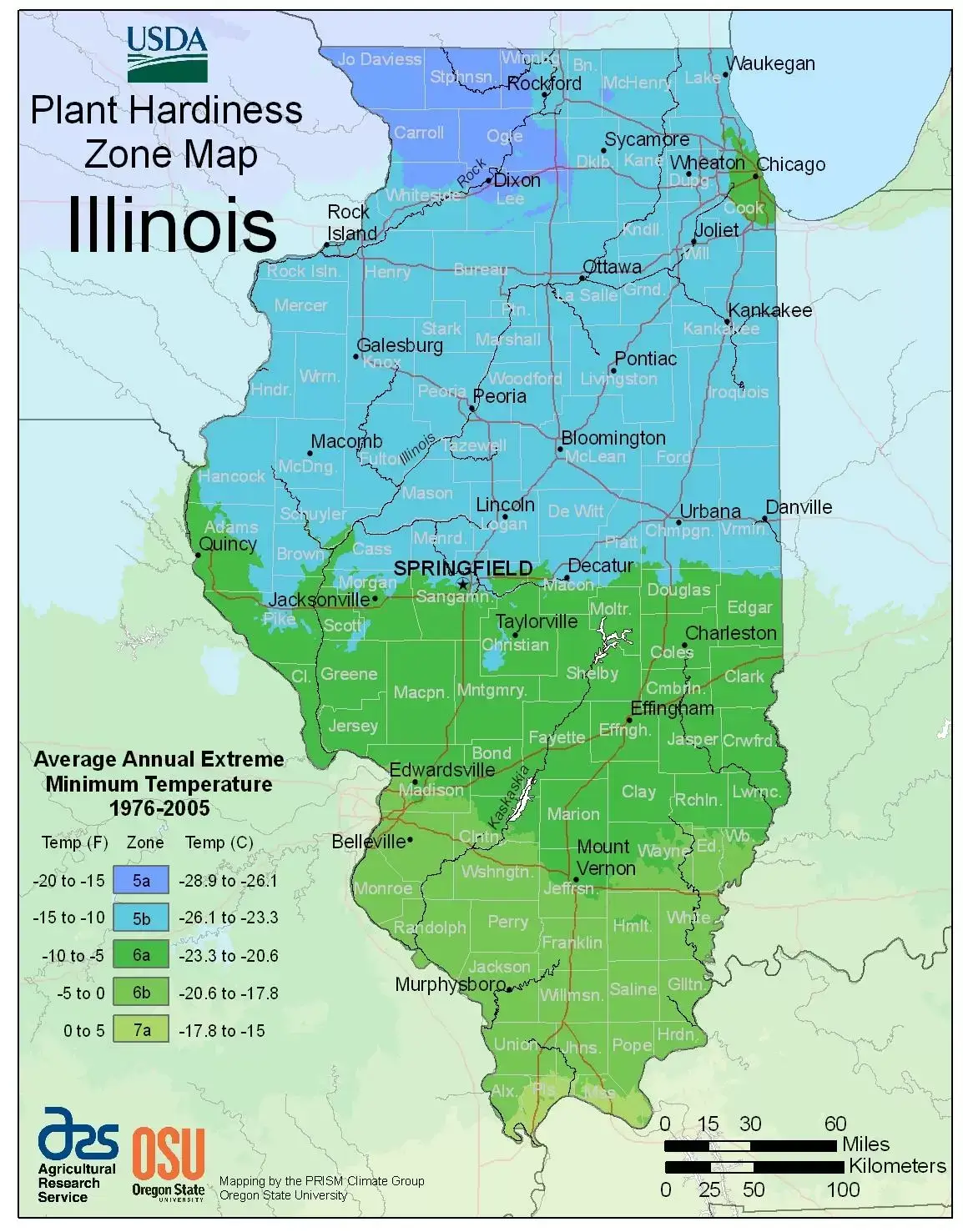A lush green lawn has long been a dream of any homeowner. Recently, the use of pesticides and chemical fertilizers has thrown homeowners off of grass seeds and they’ve been turning to alternatives, such as clover. However, homeowners still view clover as a type of weed and nothing looks as welcoming as a grass seed lawn in Illinois — as long as you can grow it without patchy, brown spots.
Achieving such a goal for your lawn is absolutely possible. Choosing the right grass seed makes it easier for you to grow a beautiful lash lawn without the need to add pesticides or chemical fertilizers. Read on to learn more about how to grow the best lawn possible.
Illinois Grass Growing Conditions
Growing healthy grass from grass seed is conditional on soil health. Illinois has different soils, with some of them being highly productive. Other types might not be fit for growing grass because they might be too steep or dry. But overall, Illinois is a great agricultural state and is perfect to plant grass seed. The location, low elevation of the state, and the confluence with major drainage lines have influenced soil development throughout the centuries. West Illinois has the Mississippi River, the south has the Ohio River, the Southeast has the Wabash River, and the Illinois River is in the central part. These rivers have distributed critical nutrients to the soil, making it fertile and productive. Additionally, Illinois’s climate is also favorable to the soil condition and for growing lawn grass. The state has the perfect mix of warm and cold weather to allow for cool-season grasses and warm-season grasses, as well as adequate fertilization periods. In general, there are ten major soil groups, and five of them are crucial to Illinois:- Mollisols: dark-colored soils, perfect for lawn grasses, formed by the decomposition of underground remains. Mollisols are mainly found in central and Northern Illinois, making up 49% of the state.
- Alfisols: light-colored soils that grow under forests. They are predominant in Southern Illinois and make up 46% of the state.
- Entisols: light-colored soils in Southern and Western Illinois and make up 3.25% of the state.
- Inceptisols: thick and dark-colored soil types that make up 1.5% of the state soil.
- Histosols: are made up of organic soils, such as mucks and peats, and only occupy around 1% of the state soil.
When to Plant Grass in Illinois?
Beginners with little information or experience might assume that you can plant grass seed anytime you want. On the contrary, each region has a specific time for planting lawn grasses, depending on the climate, soil, and many other factors. For Illinois, the best time to plant lawn seed mixture is mid-August to early September. If you’ve missed this time frame, you can also plant in April. You should avoid planting new grass in late spring or mid-summer because the full sun might damage it. That’s because the region is primarily appropriate for cool-season grasses and requires some shade.Best Grass Seed for Illinois
The type of grass seed you choose for your lawn in Illinois depends on the plant hardiness zones and the weather. Because Illinois has a colder temperature, warm season grasses are not an option. If you plant warm season grasses, they will quickly wilt and your efforts to grow a green lawn will go to waste.
The Illinois plant hardiness zone covers zones 5a, 5b, 6a, 6b, and 7a, which have a temperature range of -20 to 5 degrees Fahrenheit. That’s why the best type of grass seeds for Illinois are cool season grasses.
1) Kentucky Bluegrass
Kentucky Bluegrass is the most popular lawn grass in Illinois. Homeowners like it because of its durability, hardiness, and appearance.
While most people call it the best grass seed in Illinois, Kentucky Bluegrass requires moderate to high attention and maintenance, including fertilizing, mowing, and watering, to keep it looking good. So you’ll need to spend quite some time working on it to maintain high quality.
Kentucky Bluegrass prefers the full sun, but some subtypes, or cultivars, have a tolerance to light shade. Kentucky Bluegrass spreads through an underground root system known as rhizomes. It grows slowly if spread by seed, but its lush germination makes waiting worthwhile.
2) Fine Fescue
Second on the list is the fine fescue, which is perfect for new lawns and property owners with little experience. It’s adaptable to shade and requires less maintenance than Kentucky Bluegrass. Frequent mowing could do more harm than good, so keep that in mind when creating a mowing schedule.
However, fine fescue does have good durability and can recover after some foot traffic (also known as wear tolerance).
Fine fescues have a fine texture and include a few subtypes of popular grasses such as:
- Red fescue
- Chewings fine fescues
- Sheep fescue
- Hard fine fescues
They’re primarily used in different mixtures to establish variations of light intensities.
3) Perennial Ryegrass
Quick to grow and able to tolerate heavy foot traffic, Perennial Ryegrasses are high-quality, bunch-type grasses that are similar to Kentucky Bluegrass. Perennial Ryegrass requires effort and maintenance, so they do better as part of a grass seed mixture rather than on its own.
4) Tall Fescue
If you live in warmer parts of Illinois, especially southern Illinois, the tall fescue is perfect for home lawns. It has a high drought tolerance, excellent heat resistance, a high-quality appearance, and remarkable recovery ability. Tall fescues are clump-type grasses, so they may take longer to establish but the end result looks wonderful on your lawn.
5) Zoysia Grass
As one of the few warm-season grasses in Illinois, Zoysia is easy to plant and care for but can become burdensome. It’s deep-rooted into the ground and can be very invasive. So, unless you live in warmer parts of the state, or you want to conserve water with a drought-resistant grass type, Zoysia should not be your first choice of grass type in Illinois.
Recommended Lawn Seed Mixes for Illinois
Mixing two or more lawn seeds produces mixtures and blends. These mixtures combine several grass types, enhancing them to withstand more stress or problems than if you were to use only one grass type.
The cool temperatures of Illinois, especially Northern Illinois, allow for more cool-season grasses and mixes, such as Kentucky bluegrass, Perennial Ryegrass, and Fine Fescues.
Here are the recommended mixes of grass types for Illinois, depending on light exposure.
Full Sun Mixes
- Kentucky bluegrass blend/perennial ryegrass
- Kentucky bluegrass blend
- Fine fescue blend
- Tall fescue blend
- Kentucky bluegrass/perennial ryegrass/fine fescue
Light Shade
- Kentucky bluegrass/fine fescue blend
- Tall fescue blend
No Sun/More Shade
- Rough bluegrass
- Fine fescue blend
- Woodland natives
- Full shade tolerant ground cover
- Mulch to cover soil
Conclusion
An alkaline soil and generally low elevation make Illinois and Northern Illinois the perfect place for cool-season grasses. Many homeowners love planting new lawn seeds and getting that beautiful green color in their front or back yards.
The best grass seed is the Kentucky Bluegrass. It develops a great root system and has excellent wear tolerance. Other grasses such as tall fescues, red and chewings fescues, perennial ryegrass, and more, make for perfect lawn grass.
Getting these grass seeds is easy: Nature's Seed offers high-quality seeds tailored to your projects and goals. You can choose based on regions, mixes, and more to get the best result for your lawn. Visit our online store and start planning — and planting! — your lawn today.



